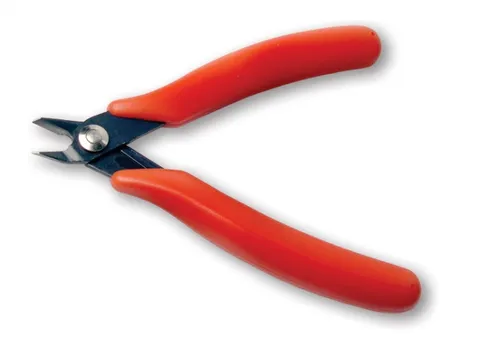For those of us in the precision cutting tools business, we’re often asked about how to work with welded wire and woven mesh – especially premium products made of stainless steel. But before we get into the type of precision cutters and the techniques that will get the job done quickly, efficiently and safely, a couple of definitions:
Welded mesh is so popular because of its strength, quality and versatility, thanks to electronic welds at every single contact point.
Woven mesh, as the name implies, is produced through a horizontal-vertical weaving process of typically stainless steel strands.
For both products, the indoor and outdoor applications could hardly be more vast, covering industries from construction and agriculture to heavy manufacturing, retail, horticulture – and much more. Depending on the gauge, it’s typically strong enough to support a mighty load or provide robust security – although the very thinnest gauges are human hair-like and can be precisely snipped with a pair of decent scissors. In heftier cases, though, laser cutting technology or a rotary tool may be required to slice through the thick gauge.
In most typical cases, however, some simple and decent wire cutters will be more than powerful enough to slice through the job. Although you can certainly pay hundreds (or even thousands!) for premium cutting tools, welded & woven stainless steel cutters are a simple hand-held pliers-like tool comprising two levers pivoting on a fulcrum with a powerful jaw. And it’s with this tool-assisted muscle-power alone that can easily, precisely and cleanly cut through your stainless steel mesh for whatever projects you have in mind.
The question we’re posing today is how it’s done with a premium pair of cutters:
1. Can it be done?
If the mesh is anywhere up to about .25mm gauge, don’t worry about those cutters – some decent scissors will do! Beyond that, and up to as much as 1.5mm or significantly more if a heavy duty tool is used, your cutters will do the job.
2. Safety first!
If you’re holding a tool powerful enough to cheerfully ‘snap’ through robust stainless steel, you’re going to have to protect your soft body. Safety glasses are a must for those flying steel fragments, as are cut-rated gloves. To go the extra mile, consider a face shield and even hearing protection, as those ‘snaps’ can be quite loud if you’re going to be working for a while.
3. Roll it out
If your mesh is rolled up rather than in sheet form, you’ll need to unfurl it fully into as flattened a surface as possible before getting started. Although this preparation stage can be fiddly, you don’t want the whole thing to dangerously spring back at you once that final ‘snip’ is made. It may be necessary to work with someone else who can help hold the uncut material in place while you do the cutting with your full attention.
4. Make a line
For a visual guide as you cut, consider adhering a line of tape to the mesh so that you don’t accidentally cut in the wrong place.
5. One at a time!
Particularly for thinner gauges, it can be tempting to cut more than one strand at a time. But the safety-first approach calls for full attention on each individual snip, and the precision of the overall job will also greatly benefit from not trying to hurry, as rushed cuts can leave burrs. As you proceed, get rid of the detached mesh pieces as you go so your work area is unimpeded.
6. No loose ends
Once you’re ready, make your snips as close to the mesh’s weld, weave or overlap points as possible, without compromising the integrity of the connections. This is important, as failing to do so will leave you with loose ends that won’t just look messy and catch on things, but can cause quite significant injuries. If there are significant loose ends, bend or fold them inwards so the sharp end is tucked away.
Ready to get started?
Before pushing ahead with that first satisfying ‘snip’, ask yourself the following quick questions:
* What are you trying to achieve?
* What exact material are you using?
* What is the wire gauge?
* How important is the precision of the cut (does it need to be 100% burr-free or look as tidy as possible?)
With these questions asked and answered, you should be ready to select the perfect cutters from the job. If you need a little guidance, our industry guides would be delighted to assist! Happy cutting!
Looking for great cutters? Visit the RS Online store, and discover the range today.

